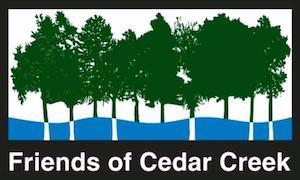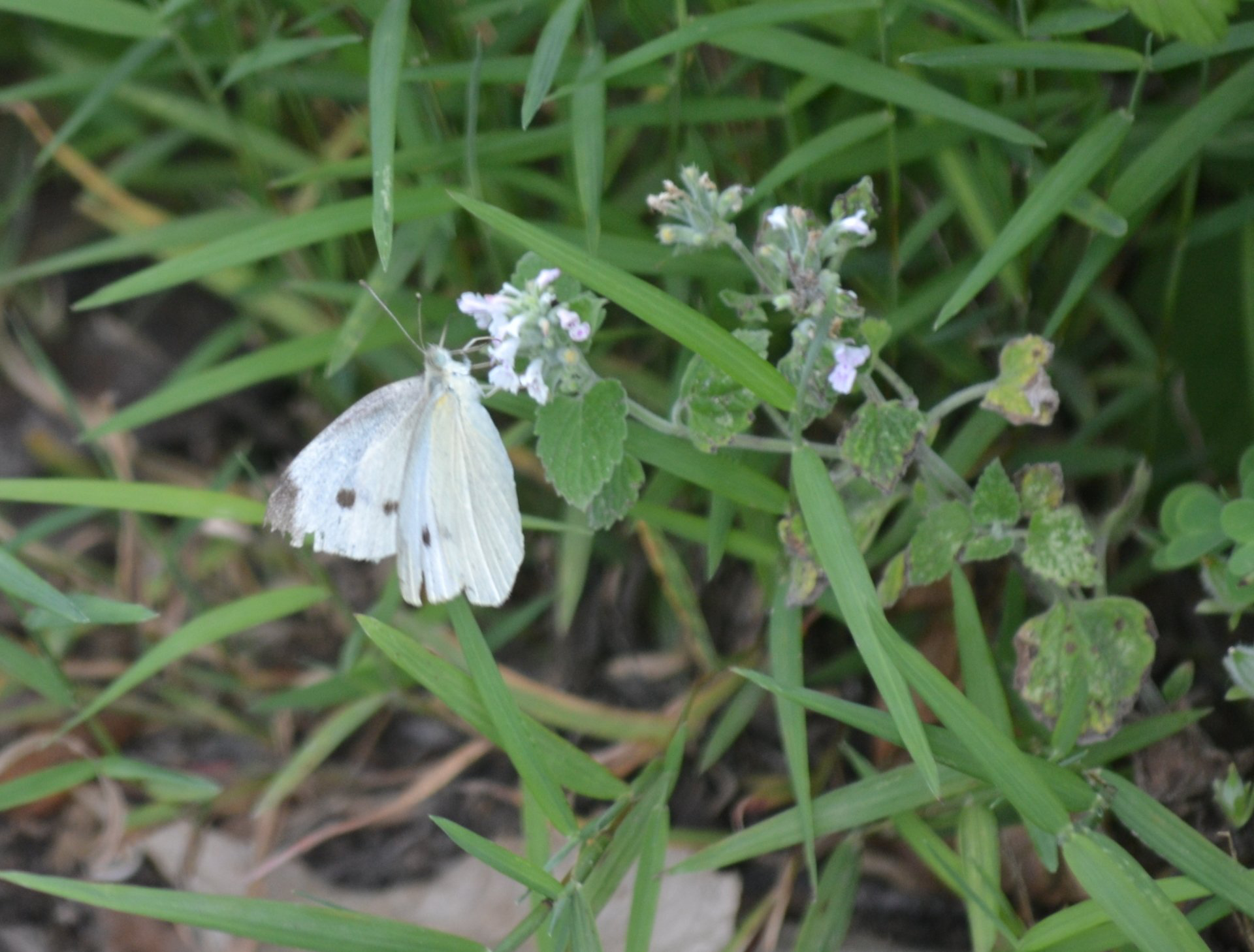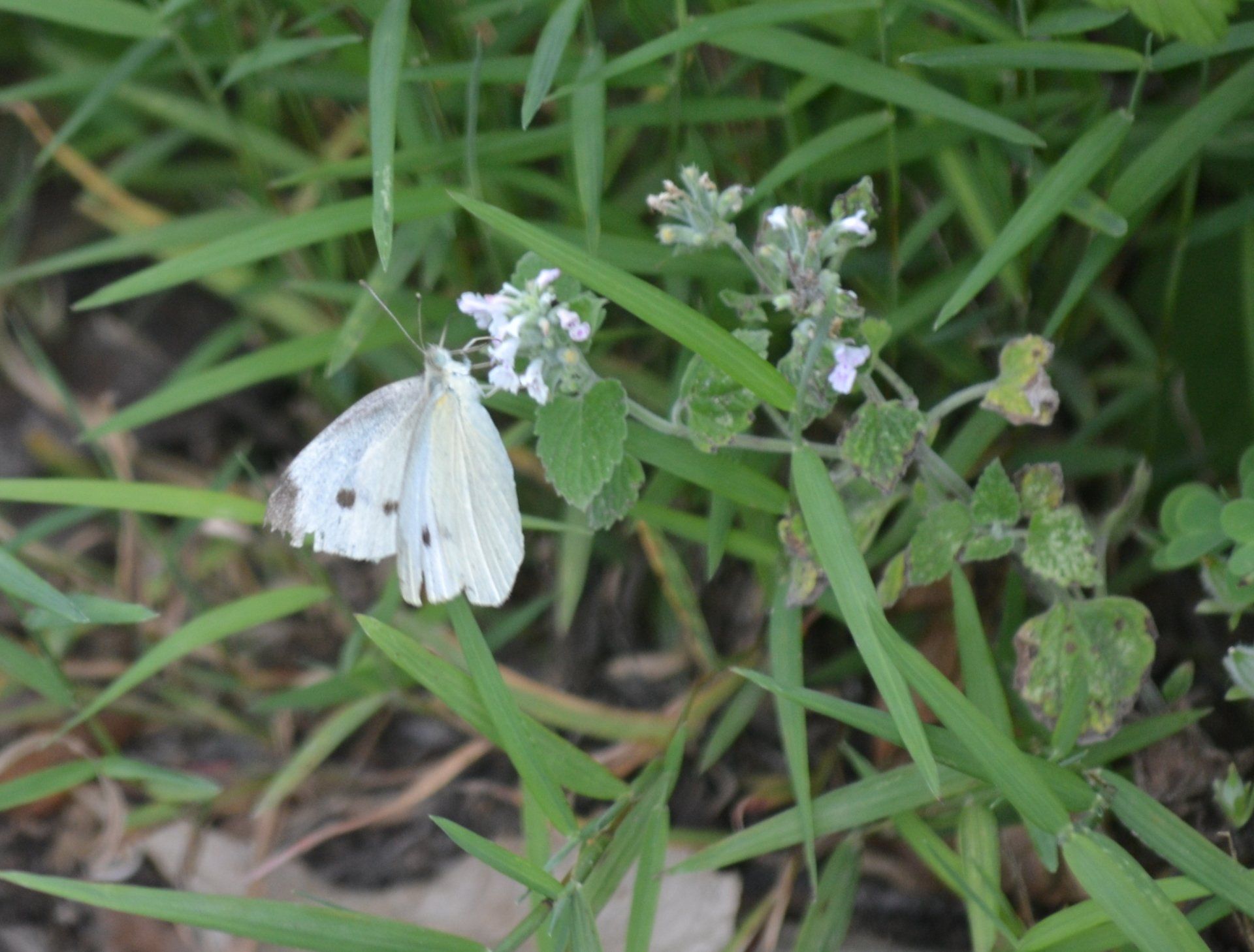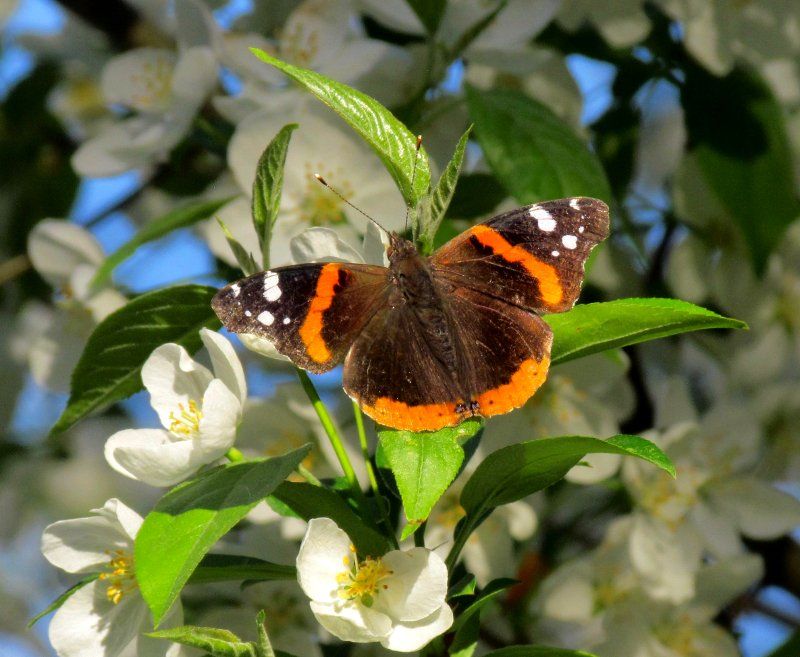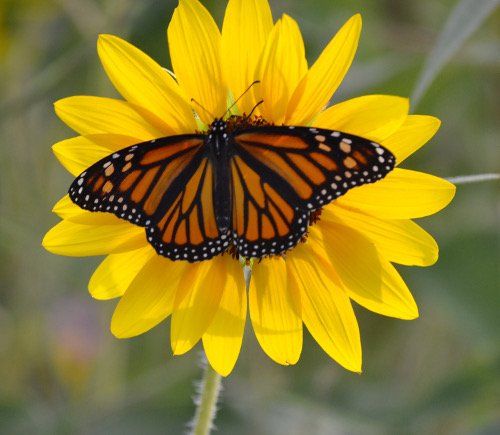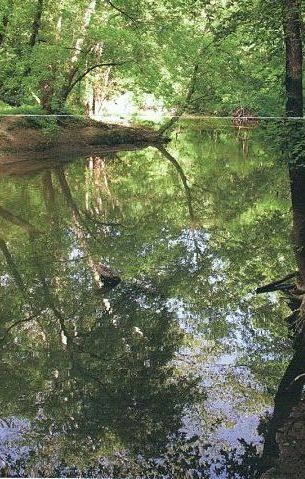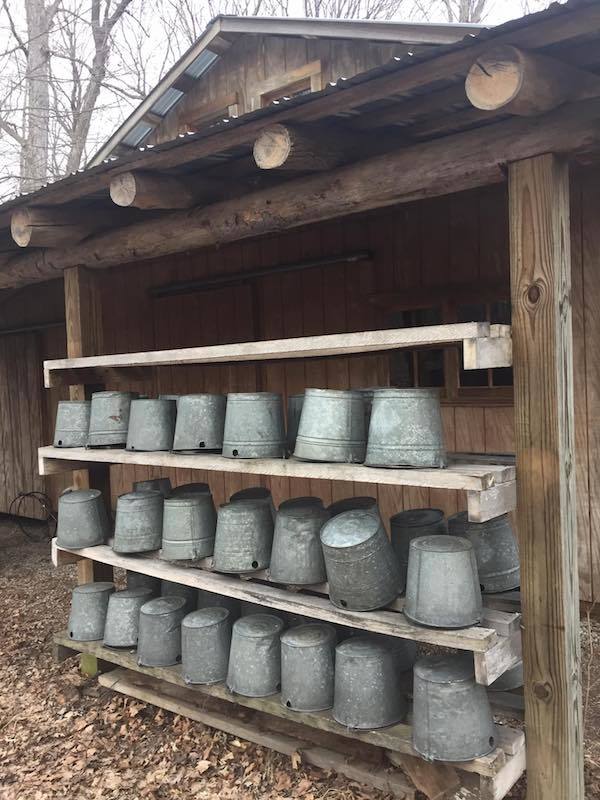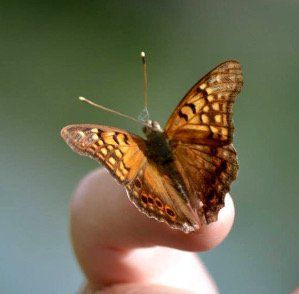Guide to Cedar Creek
A Sampling of Cedar Creek ButterfliesFred C. Feitler
Butterflies are important to a healthy Cedar Creek ecosystem because they pollinate flowers. You can watch them going from flower to flower, very much like bees. They thrive in native habitat and in our native plant gardens. Most important in attracting butterflies to our gardens (and keeping them alive): don’t use pesticides!
Both butterflies and moths are in the order Lepidoptera. Moths generally have larger and sometimes hairy bodies, are found here all year (even in sub freezing weather), and are more likely to fly during the night. Butterflies are nearly always seen during the day.
Nearly all Lepidoptera have four wings and tend to drink nectar from flowers, although some also sip sap dripping from flowers, trees, and shrubs. Some species are quite plain, others breathtakingly beautiful, appearing carefully hand painted. Just as some birds can be identified by their flight patterns, some butterflies fly in recognizable patterns.
The Mourning Cloak, Nymphalis antiopa, a member of the brush footed family, is easily identified by its early spring presence and 2 ¾ to 3 ¼ inch sharply angled, irregular wings, dark brown with yellow outer edges. Because we see it early in the year, some believe it migrates, but more likely, it overwinters, hibernating in the bark of trees.
The Cabbage butterfly, Pieris rapae, also an early spring butterfly, is named for its preference for laying eggs on cabbage plants (and other vegetables in the brassica family) which the larvae then eat. This commonly seen butterfly, 1¼ to 1¾ inches, white with several black spots on its upper wings, may be in the Cedar Creek area all summer with up to three broods.
The Spring Azure, Lycaenopsis argiolus, seen in early summer, is approximately one inch and notable for its attractive, pale, slightly violet-tinged blue upper side.
Early summer we also see two variations of the Admiral family, a fast-flying butterfly about 2” long whose broods occur in late June and July. The more common Red Admiral, Vanessa atalanta, has orangish/red bands around its hind wing, while the White Admiral, Limenitis arthemis, has a white band around the hind wing.
The Hairstreaks (subfamily Theclinae), all approximately one inch across, are prized for their beauty and interesting wing structure. Most of the 35 or so varieties have, on their hind wing tails, different and interesting-colored markings that allow you to determine which variety you have seen. Most common in the Cedar Creek area is the Grey Hairstreak, Strymon melinus, with orange spots around the hind wing tail.
Perhaps the best publicized, best known, and most recognized butterflies are the Monarchs, Danaus plexippus, large insects with dramatic orange, black and white markings. They are sometimes referred to as milkweed butterflies because they lay their eggs on the leaves of this extremely important native plant, resulting in a large larva and pupa. Because Monarchs eat milkweed, their bodies develop a bitter taste that discourages birds and other insectivores from eating them for lunch! The Monarch migrates long distances, flying from our area of North America as far south as Mexico and South America.
The Viceroy, Limenitis archippus, is often confused with the Monarch because of its similar colors and markings. It is called a “mimic” for the 3.5 inch Monarch even though it lacks the Monarch’s bitter taste and is only 2.8 inches across. Perhaps a predator that once tastes the bitter Monarch will avoid the look-alike Viceroy.
The super family of Hesperioidea, the Skippers, have one of the largest number of subfamilies. One of the most common is the 1.75 to 2 inch Silver Spotted Skipper, Epargyreus clarus, easily recognized by its rapid erratic flight pattern and easily seen silver spot on the hind wing.
Another Skipper, the 1 to 1.25 inch Pyrgus communis or Checkered Skipper, can be found around Hollyhocks and Indian Mallows, Wild Tea, and other Mallow plants.
Finally, the smallest of Northern Indiana/Cedar Creek watershed butterflies that I will describe is the Least Skipper, with a 1.0 inch maximum wingspan and perhaps the longest Latin name, Ancyloxpha numitor. The wings have tawny brown edging with orange filling.
To attract these beautiful and useful butterflies, you can:
More to Explore . . .
- Butterflies of Indiana: A Field Guide (Indiana Natural Science), Jeffrey E. Belth. Indiana University Press. 2012.
- Butterflies and Moths of Indiana. https://www.insectidentification.org.
- Monarch Butterfly Journey North. https://www.learner.org/jnorth/.
Butterfly Image Information
Tiger Swallowtail
(Heather Baker)
Cabbage butterfly
(Heather Baker)
Red Admiral
(Carol Roberts)
